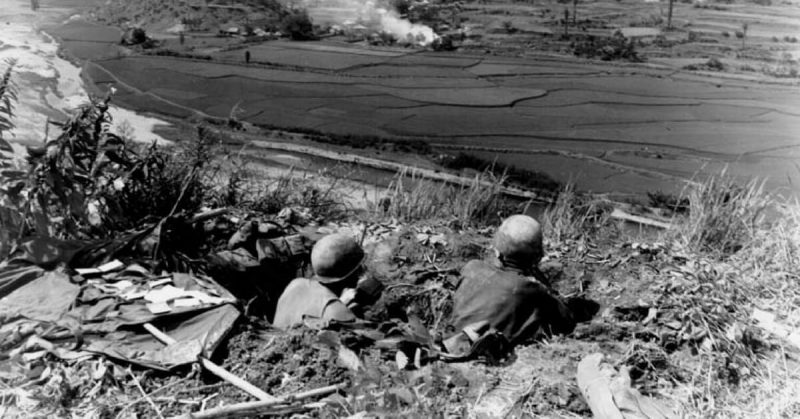In the summer of 1950, U.S. faced a new threat. The Communist Bloc grew rapidly in 1949 when China opted to join. However, the U.S. still had the atom bomb, the B-29s to transport these terrifying weapons, and the most powerful navy in the world. There was a general consensus that the next war would involve atomic weapons and would be waged by the Air Force and Navy. The majority of each nation’s military might would only be present to sweep in during the aftermath of a nuclear war.
After the brutality and chaos of World War II, the American public was eager for a stretch of normality. Maintaining a large and highly developed army was not their priority. Therefore, in the 1940’s America cut the Army budget, resulting in live fire training being restricted and basic training being cut down to just eight weeks (compared to ten or more). The U.S. Army occupation forces in Japan, in particular, saw many cuts.
However, 75,000 North Korean soldiers marching across the 38th parallel on June 25, 1950, present a new danger. A good portion of these soldiers were veterans of the Chinese Civil war, having fought under Mao. They were well equipped with tanks and artillery made by the Soviets. Fighters and bombers even gave North Korea control of the skies, at least initially. In the face of their advance, the U.S.-trained South Korean army started to collapse.
The United Nations gave the U.S. a mandate to dispatch troops to protect South Korea from Kim Il-Sung’s troops. Occupation troops were airlifted from nearby Japan and were the first to arrive. American combat troops arrived in the form of Task Force Smith. This was a force commanded by Lt. Col. Charles Smith and built around a core of two basic companies from the 21st Infantry Regiment of the 24th Infantry Division. It consisted of just over four hundred officers and men, plus a few 105-millimeter howitzers from attached artillery battalion. It had no tanks, no close air support and very poorly equipped communications. Its antitank firepower consisted of small bazookas that had already failed to destroy German tanks just five years earlier in World War II. Furthermore, while some of the Task Force Smith’s officers and NCOs had fought in World War II, the majority of the troops were inexperienced.
Task Force Smith was dispatched north to impede North Korean advances. They set up near the town of Osan. On July 5th, a slew of North Korean T-34/85 tanks from the 105th Armored Division launched an attack against the U.S. troops. It was the first ground action of the Korean War, reported National Interest.
Looking back, the results seem inevitable. The U.S. only had a few howitzers with HEAT anti-tank rounds. It was certainly not enough to keep the North Korean tanks from overtaking the American positions. Normally the tank assault would have been handled by Task Force Smith’s bazookas, but the Rockets could not penetrate the armor of the Soviet-made vehicles.
Task Force Smith was also surrounded by North Korean infantry, forcing Smith to try and withdraw. As one contemporary account said:
“The plan was for an orderly leap-frogging withdrawal, with one platoon covering another. Under heavy enemy fire, the poorly-trained American troops abandoned weapons and equipment in sometimes precipitous flight. Not all of them had received word of the withdrawal, and it was at this point that the Americans suffered most of their casualties.”
Many American soldiers were killed and wounded, and many more captured by the enemy. On the other side, North Korea lost about 130 men, with four tanks destroyed or immobilized. At the very least, the Americans had managed to slow down the North Korean advance – but only for a few hours.
Two months later MacArthur landed at Inchon. By now, of course, the example of Task Force Smith should have made it clear that inexperienced soldiers with inadequate training and equipment do not perform well on the battlefield. To this day, the lessons that can be learned from their defeat are still relevant, especially in the case of any nation committing to war without proper preparation and allocation of resources. These issues cannot be taken lightly, as real people will always pay the price for their generals’ mistakes.
